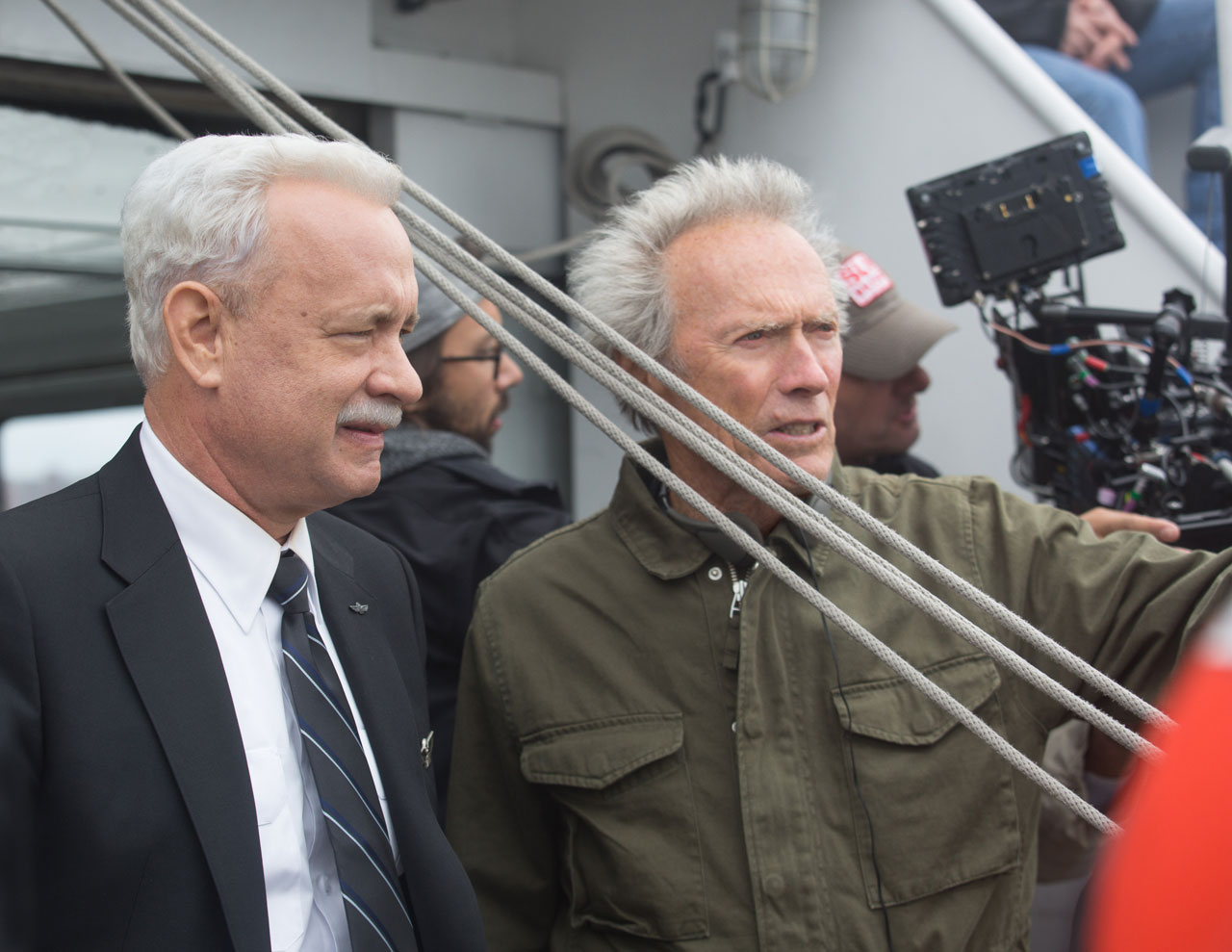
Captain Chesley “Sully” Sullenberger (Tom Hanks) instructs the passengers and crew to brace for impact as he attempts to land his damaged airplane in the Hudson River in SULLY.
Sully is the true account of a miraculous forced water landing that occurred in January 2009 on the Hudson River in New York, after dual engine failure occurred on a commercial airline flight shortly after takeoff. The captain of the flight, Chesley “Sully” Sullenberger (Tom Hanks) made a split-second decision to ignore the advice to return to a runway, and his course of action resulted in the successful saving of 155 lives (every individual on board) upon splashdown.
In Clint Eastwood’s biographical film of Captain Sullenberger, the focus is on the aftermath and effect of the famous landing. Despite a nation calling him a hero, and copious amounts of positive news coverage, an investigation behind-the-scenes questioned Sully’s actions positing whether the captain’s decision actually put the crew and passengers in more danger, regardless of the eventual outcome. Sully attempts to provide insight into the stress Sullenberger endured personally and professionally, an aspect often overlooked in the midst such extraordinary events.

What works in Sully is the talent—Hanks’ ability to portray an everyman hero, and Eastwood’s ability to recreate palpable tension. As per usual, Hanks brings gravitas and presence to the screen, giving Sullenberger true depth as an intelligent, confident man simply doing his job. There’s genuine earnest in the character and Hanks presents Sully as competent, but also dogged by hints of self-doubt and bouts of post-traumatic stress. It’s a captivating performance given the intimate portrait Hanks provides.
The crash sequence in Sully is suspenseful to the point of inducing aviophobia. Eastwood shows his master craft as a director, and giving audiences a true sense of what participants, both on and off the flight, likely experienced during those fateful moments. Even knowing the eventual outcome, Eastwood is able to conjure a true feeling of danger and dread as the events unfold, and audience may find themselves involuntarily holding their breath.

While Sully has strong components in the form of Hanks’ work and an exhilarating, if not horrific, crash sequence, the final product is bogged down with superfluous and often repetitive material. With the current running time of only 96 minutes, clearly Eastwood struggled to fill the gaps between the interesting elements. For example, Sully shows nearly the entire Hudson River landing twice over, with only minimal differences in perspective. On top of that, Eastwood includes four nearly complete simulations of the crash, and Sully’s nightmares of the incident. Considering as well the added flashback sequences which only detract from the main narrative, Sully emerges bloated.
In the end Eastwood, found himself in a tough situation—a compelling story of interest with a fascinating lead character, but simply not enough material to warrant a typical feature length film. His decision to pad his base may be a bit distracting, but Hanks’ ability to captivate keeps Sully from crashing.
Grade: B+
Photos Courtesy of Warner Brothers Pictures